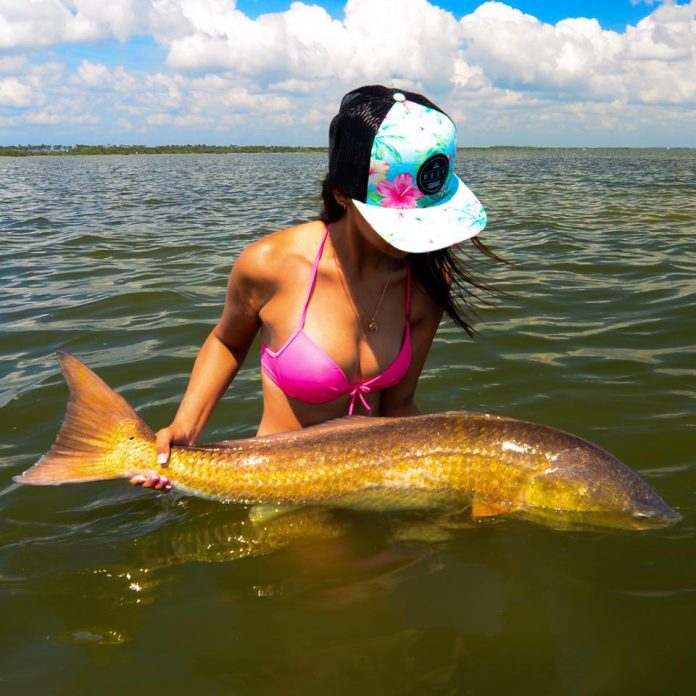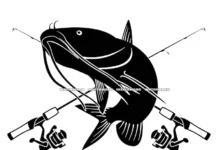
By Kathy Etling, St Louis Post-Dispatch
01/10/2009
From the moment the fishing rod in my grip began to pulse wildly I was hooked just as surely as the redfish fighting at the end of the line. While not huge, according to guide Neil Taylor, the redfish had ‘shoulders,’ as anglers sometimes say. Burrowing its snout into seagrass mats growing in water less than two feet deep, the fish taxed the reel’s drag with sustained bursts of power that had it going to and fro beneath the kayaks, doggedly pulling line far out into the bay and occasionally bending the rod into a U as Taylor quietly offered advice.

I’d tried — and failed — to catch redfish before, once battling a big red for all of 30 seconds before it pulled off in a Boca Grande backwater, and just recently losing another while fishing Tampa Bay. But this fish seemed well hooked; this fish, I began to hope, might actually be boated. As I thought of the moment, if it did arrive, when I’d finally, gratefully, cradle the redfish’s body, I began to realize just how addictive the sport can become.
Two days previously I’d watched Bob, my husband, catch two big redfish, each over 27 inches in length, while fishing Tampa Bay with Eric Bachnik of MirroLures. The redfish fell victim to one of MirroLure’s soft plastic jigs in electric chicken, a gaudy combination of hot pink and lime green, and each gave Bob one heck of a fight.
Bill Aucoin, a Florida friend and fishing buddy who had helped plan our trip, hoped to share with us a do-it-yourself flats fishing adventure for snook using tackle an ordinary angler might bring from home. Regrettably, the snook had turned off after a cold snap, and so Aucoin decided to substitute an afternoon of flats fishing in kayaks instead. Our guide would be Taylor, another Aucoin friend who, in a previous career, had been a minor league umpire.
Taylor, of Strike Three Kayak Fishing, primarily fishes offshore of Caladesi Island and Clearwater Beach. His charter trips are reasonable and his saltwater tutelage exceptional.
A do-it-yourself kayak or canoe fishing trip would be even more reasonable, and while such outfitters abound throughout Florida, Taylor’s firm doesn’t rent kayaks. Anglers could take a basic kayaking lesson, ask a few pertinent questions and be fishing the saltwater flats on the same day.
By the time we met Taylor it was well past 1 p.m. Relying on human power to maneuver our craft onto the fertile grass flats was exciting enough, but knowing Taylor was convinced we’d find schools of redfish, tailing on the rising tide as they gorged on shrimp, crabs and marine worms, had everyone excited.
Taylor’s instincts were spot on. No sooner had we pushed and paddled our way across a particularly shallow flat than we spotted hundreds of redfish tails breaking the water’s surface.
Granted, we didn’t actually use our own fishing tackle since Taylor’s company supplied it, but what we did use was similar to what had been hauled from home — Daiwa Tierra 2000 and 2500 mid-sized spinning reels, 6-foot-6 and 7-foot St Croix Tidemaster and Inshore Avid medium action rods, 15-pound test Power Pro braid line and soft plastic baits. Taylor rigs lines with single hook lures for safety’s sake and prefers soft plastics like the 3-inch Fat Sam Mullet in clear gold, Glass Minnow, 5-inch SlamR in rootbeer gold glitter, or Glow Shrimp, all made by 12 Fathom.
“Tossing a gold spoon is a good way to prospect for redfish,” Taylor added. “You can cover a lot of water that way. When redfish are sulking and won’t eat anything else you can usually annoy them into striking with a topwater.”
Taylor also uses live bait like shrimp, which is what my redfish had gobbled up.
Taylor has been fishing in Florida since 1975. He’s specialized since 1993 in fishing the coastal flats, and in kayak fishing since 1998. Clients can expect to take snook, redfish, speckled trout, flounder and sharks as well as the occasional pompano, cobia, Spanish mackerel, sheepshead, black drum or tarpon.
Redfishing, we discovered, is a lot like hunting. First, find a spot where redfish are feeding. Clues include tailing action or jumping mullets, a prey fish species. “I’m not sure why the mullet jump,” Taylor mused when asked. “I don’t think redfish chase or feed on mullet. I think mullet just prefer to be where redfish are feeding.” In any event, the flat teemed with life — tailing redfish, jumping mullet, pelicans and herons scouting for a meal while soaring just a few feet over the water. On our way to the flat we’d passed roosting yellow crowned night herons and even a roseate spoonbill completely unperturbed by our presence.
Taylor’s area provides great fishing action all year long. “Redfishing is almost always good; speckled trout are best from late October through the end of April,” he said. “Snook are best from mid-March through mid-October with a peak from June until mid-July.”
Nailing down the best time of day to be fishing isn’t easy, Taylor admitted “Tide is important, but so are other factors,” he said. “From May through October I like to be out between 5:30 a.m. and 11:00 a.m., and again from 5:30 p.m. until sundown. Fishing tide switches can also be good, not only when tides are starting to rise but when a high tide switches to outgoing water (ebb tide).
Alligators aren’t a problem, but avoid going out in winds greater than 15 knots. Afternoon thunderstorms are common during the summer months. If planning to go it alone ask which areas you should avoid, and when to avoid them. In Taylor’s area, for example, kayaking inside Hurricane Pass with an east wind and an outgoing tide is like asking for ‘a trip to Mexico.’ Always tell someone where you’re going and when you plan to return.
After a tussle of more than 10 minutes the redfish was beaten. As I cradled the fish in my hands I knew it wasn’t as large as those which Bob had caught, but at more than 5 pounds it was big enough for me.

To contact Tampa Bay area kayak guide Neil Taylor go to: www.strikethreekayakfishing
MirrOlure information: www.mirrolure.com
- The Neil Blog… - July 26, 2023
- The Catfish - July 26, 2023
- update - July 22, 2023












